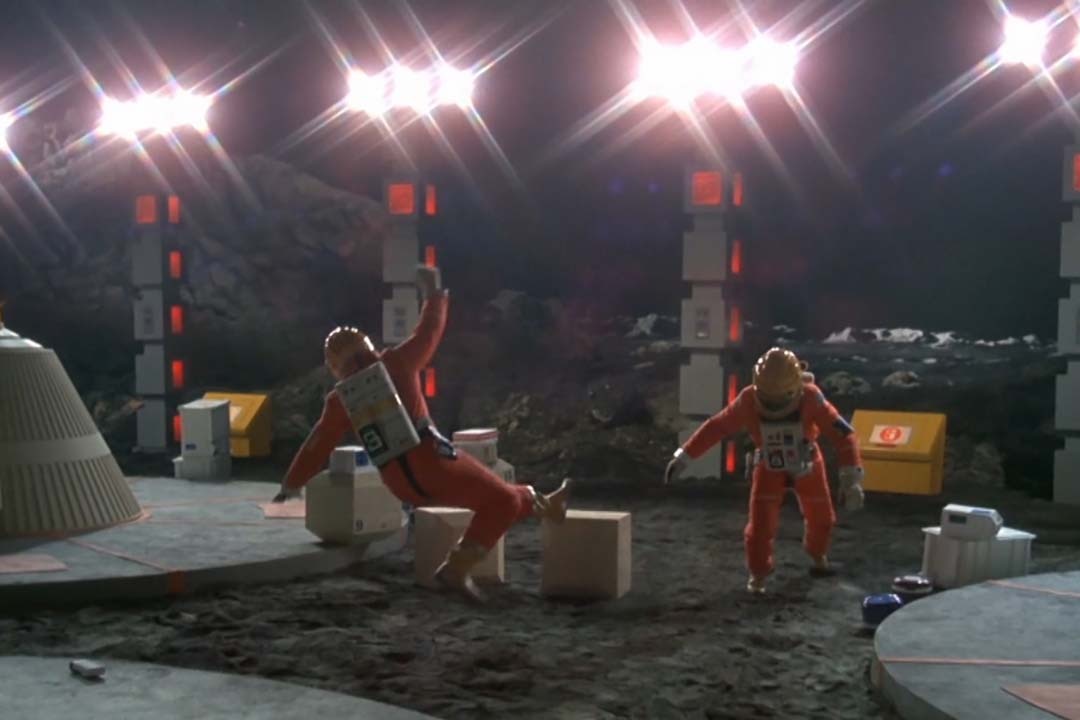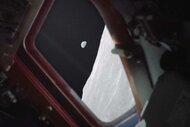Create a free profile to get unlimited access to exclusive videos, sweepstakes, and more!
Astronomers will shine a light on the universe’s 'dark ages' with a telescope on the Moon
How do you see a time when light didn't exist?

In the classic science fiction series Space: 1999 (now streaming on Peacock!), humanity doubled down on space exploration in the latter half of the 20th century and built a permanent base on the surface of the Moon. There at Moonbase Alpha, scientists and explorers lived out their lives, running experiments and pushing the boundaries of humanity’s territory in space. While the Moon is a harsh place to live, it has some serious benefits when it comes to investigating the universe. Namely, it’s quiet, comparatively dark, and without any of the atmospheric or electronic noise we’re surrounded by on Earth. It’s also pretty far away from the rest of humanity, which makes it a good place for doing dangerous or sensitive work.
For the fictional folks in Space: 1999, the Moon offered a relatively safe place to stash all of humanity’s nuclear waste. Or so they thought. Putting our radioactive trash on the far side of the Moon ensures it stays a long way away from Earth, and with a gigantic rock standing in between, but it was a plan destined to fail. When a mysterious form of cosmic radiation struck the piled up nuclear waste, it detonated with such violence that it cast the Moon and its unsuspecting crew into deep space.
RELATED: Splashdown: Orion returns safely from the Moon! What’s next for NASA’s ambitious Artemis program?
The lesson, of course, is that lunar nuclear dumping sites are an efficient way to accidentally build interstellar starships. And maybe there’s another lesson that we shouldn’t turn the solar system into our own personal junkyard. That might leave some of you wondering, if we can’t fill the far side of the Moon with our trash, then what the hell can we put there? If astronomers have anything to say about it (and they probably do), they’ll be placing a small radio telescope, capable of peering into the earliest and darkest parts of the universe’s history.
The proposed instrument, known as the Lunar Surface Electromagnetics Experiment-Night (LuSEE-Night) is planned to launch on a commercial partner flight some time in the next few years. It’s the second phase of the LuSEE program, which aims to take advantage of the Moon’s unique characteristics to perform groundbreaking science. The program kicks off with the launch of LuSEE-Light, a device headed for the Schrodinger Basin at the Moon’s south pole in the latter part of 2024. Roughly a year later, it will be followed by LuSEE-Night (not to be confused with Kellie Martin’s character, Lucy Knight, on the hit television series ER).
LuSEE-Night is a pathfinder mission developed through a partnership between the U.S. Department of Energy’s Brookhaven and Lawrence Berkeley National Laboratories, the Space Science Laboratory at the University of California, Berkeley, and NASA's Science Mission Directorate. The goal is to see if low-frequency radio astronomy is possible from the Moon’s far side. If it works, it will be followed by more advanced instruments which could reveal parts of the universe’s history which have, so far, been shrouded from us.
LuSEE-Night could shine a light, as it were, on the so-called “dark ages” of the universe, a period of time between the scattering of the cosmic microwave background roughly 400,000 years after the Big Bang and the formation of the first stars roughly 400 million years later. In the period during those two events, the universe had expanded and cooled to the point that only relatively cool, non-luminous hydrogen existed, having not yet come together to form stars and shine the first light into the ancient cosmic dark.
RELATED: Behold Artemis 1's liftoff in stunning slow motion, and the melted launch pad it left behind
Conventional telescopes rely on visible light racing across the cosmos and into our lenses and mirrors. Even advanced telescopes like NASA’s JWST utilize non-visible light in the infrared to gather information about planets, stars, galaxies, nebulae, and whatever else it can point its camera at. We can’t look at the cosmic dark ages because there was no light to see. They were dark, in a way nothing has been dark since. To figure out what was happening during that period, we’re going to need a new strategy and a new instrument.
LuSEE-Night has four monopole antenna in a cross-configuration, mounted to a rotating platform on the lander’s surface. Once in place at the far side of the Moon, far from the atmospheric disturbances and signal noise of Earth, it will measure the sky, looking for radio signals between 0.1 and 50 MHz, potentially revealing information about that mysterious period of cosmic history. With any luck, measurements from LuSEE-Night and its descendants will add a new signal to the cosmic microwave background, adding a new layer of detail to our own celestial adolescence.
It’s probably a better plan than a nuclear dumping site. Just ask the cast of Space: 1999. You can find them streaming on Peacock!



























